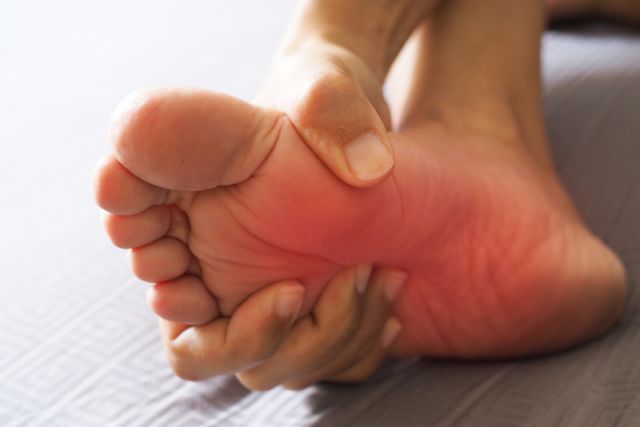Diabetic Peripheral Neuropathy (DPN)

Diabetic peripheral neuropathy (DPN) pain is a debilitating and progressive neurological disorder that significantly impacts quality of life and functional ability for patients with diabetes. Neuropathy is the medical term for nerve damage. Neuropathy a complication of diabetes. Up to 26 percent of people with Type 2 diabetes have evidence of nerve damage at the time that diabetes is diagnosed.
Diabetic Neuropathy Symptoms
Common symptoms of diabetic neuropathy (DPN) include pain, burning, tingling, or numbness in the toes or feet and extreme sensitivity to light touch. The pain may be worse at rest and improve with activity. DPN usually affects both sides of the body. Symptoms are usually first in the toes. Unfortunately, if the disease worsens, symptoms may move up the legs; if the mid-calves are affected, symptoms may develop in the hands. The ability to sense pain may be lost, which increases the risk of injury. Unless you inspect your feet daily, a small injury can turn into a large ulcer. The most serious complication of foot ulcers is amputation of a toe or even the entire foot.
Diabetic Neuropathy Treatment
Diabetic treatment generally consists of:
- Control of blood sugar levels
- Diet and exercise
- Care of the feet
- Control of the pain caused by neuropathy
There is no cure for diabetic peripheral neuropathy; however, use of these treatments can improve the pain and prevent complications.
Pain Control for Diabetic Peripheral Neuropathy
Neuropathic pain can be difficult to control and can negatively affect patient's quality of life. The pain is often worse at night and can disrupt sleep.
There are several medications that are approved by the FDA for diabetic neuropathy, including duloxetine and pregabalin. Other useful medications include amitriptyline, gabapentin, tramadol and alpha-lipoic acid.
Unfortunately, for some patients' conservative treatments with medications and supplements are only partially effective.
Alternative Treatment for Diabetic Peripheral Neuropathy
At Compass Pain and Spine, we can now offer an alternative conservative option for Diabetic Peripheral Neuropathy with an innovative device called the MLS laser. MLS laser therapy is a new, non invasive option for treatment of diabetic peripheral neuropathy patients. The MLS laser is a form of “regenerative medicine” in that it can promote the body's natural healing process. It helps through several different mechanisms:
Blood flow to the area can be increased
This is helpful in peripheral neuropathy where poor circulation is a factor in damage to the nerves. If blood flow to an area of damaged nerves is improved, it can bring with it much of the oxygen, growth factors, and nutrients that those damaged nerves need to perform better and potentially even repair themselves. With improved function and health typically comes a reduction in pain and other symptoms.
Inflammation can be reduced
Another potential cause of peripheral neuropathy are nerves being compressed against other tissues within the body. Nerves entrapped in this way can become damaged and/or send faulty signals. In addition, If tissues surrounding a nerve are inflamed, they can swell up and compress that nerve. MLS laser therapy can help relieve that inflammation, often as part of improved blood flow. With more blood coming in to bring in what the body needs, there is more to take out excess liquid and help relieve the swelling around the nerves.
Pain can be relieved
As part of a response to MLS laser therapy, the body tends to temporarily block local pain signals. This can naturally be beneficial in many cases of peripheral neuropathy, and the improved function and healing that can be stimulated in damaged nerves can provide long-term reduction in pain as well.
For patients under the right circumstances, adding MLS laser therapy as part of a treatment plan has helped them achieve better pain management, reduce their need for other forms of treatment (including medications), and improve nerve performance.
For some patients with intractable diabetic peripheral neuropathy Spinal Cord Stimulation may be an option.